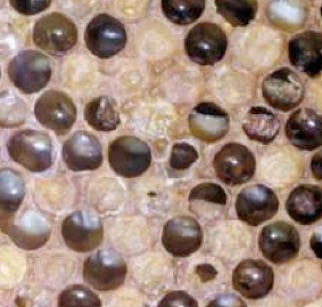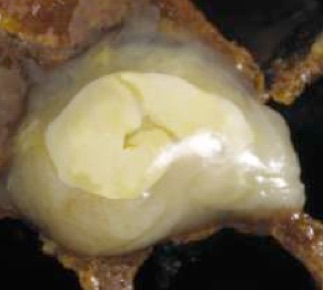European foulbrood






This is another disease of bee larvae and usually causes death 1–2 days before they would be sealed in their cells. The disease is caused by Melissococcus plutonius a round shaped enterobacteria (0,5-0,7 μm x 1,0 μm), Gram-positive, non motile, non sporigen, anaerobes or micro-aerophilus. It occurs mostly during the period when colonies are growing quickly. Many infected larvae are quickly detected and removed by nurse bees, leaving empty cells scattered randomly among the remaining brood. However, some are missed, leading to increased levels of bacteria and contributing to the maintenance of infection within the hive. Of these larvae that are not removed, many will die. These first become flaccid and turn a light yellow color that becomes increasingly brown, and at the same time they dissolve into a semi-liquid mass. (O.I.E. Terrestrial Manual 2008). However some will survive and may even successfully pupate and emerge as adults.
The bacteria are sensitive to Oxytetracycline, but the current European law forbids the use of this compound because of the possibility that it may leaks into the honey produced. It is possible to disinfect hives, frames and instruments using common disinfectant (e.g. 10% sodium hypoclorite) as the bacteria does not produce spores
You can find detailed information about EFB following the downloading the leaflet on brood diseases published by National Bee Unit
Fig 1: EFB-twisted and discoloured larvae


Fig 2: EFB photograph showing yellow/white colour of infected larval gut



Developed by
Dr. Guido Cordoni DVM, PGDip, PhD, MRCVS